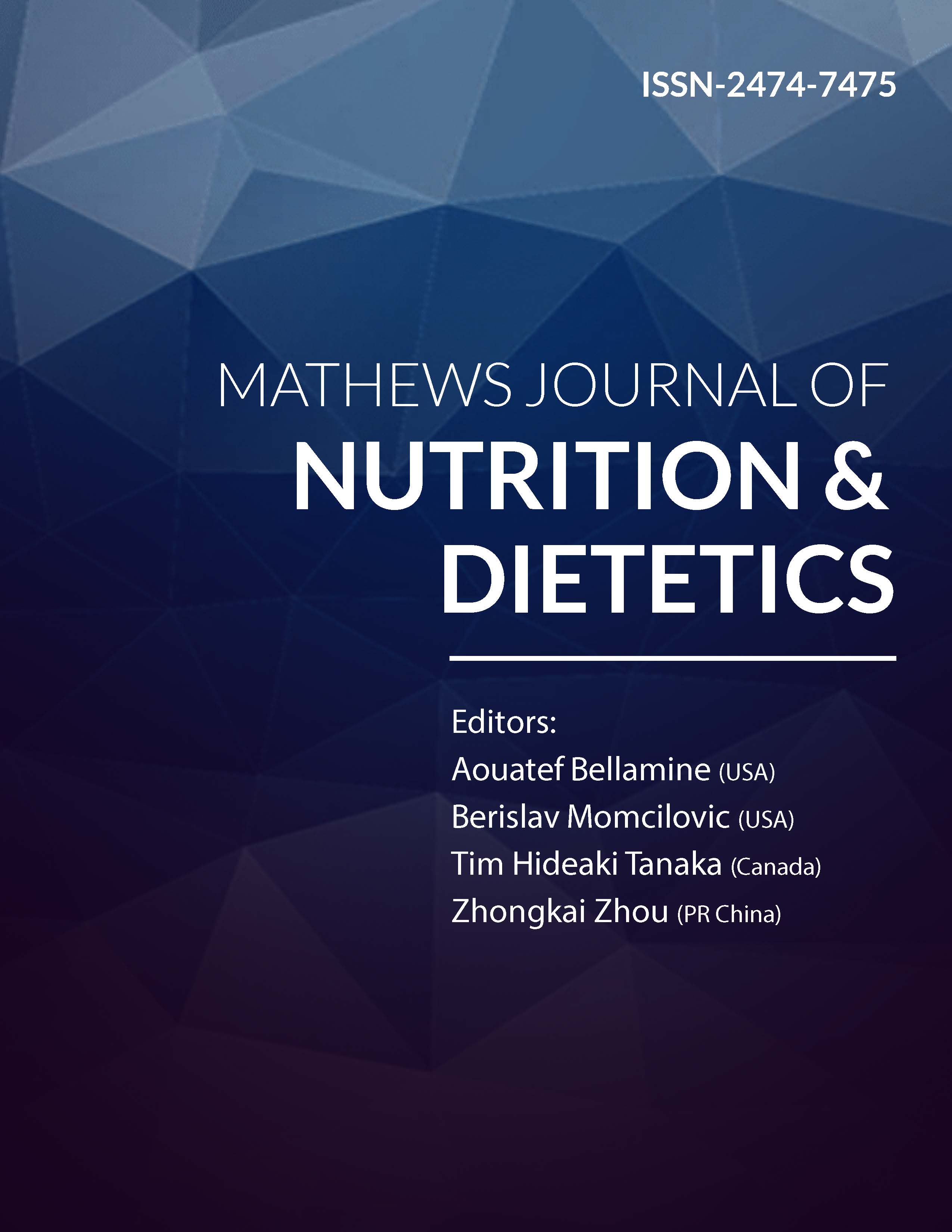
Information Links
Previous Issues Volume 6, Issue 2 - 2023
Pattern of Age-Related Changes in Body Composition: A Cohort Study in Older Hispanic Adults
Maribel Ramírez-Torres1, Miriam T López-Teros2,3, Fátima Araceli Ramírez-Caballero2,4, Julián Esparza-Romero2, Rene Urquidez-Romero5, Heliodoro Alemán-Mateo2,*
1Coordinación de Nutrición, Universidad Estatal de Sonora, Ley federal del trabajo, col. Apolo, C.P. 83100, Hermosillo, Sonora, Mexico
2Coordinación de Nutrición, Centro de Investigación en Alimentación y Desarrollo (CIAD), A.C., Carretera Gustavo Enrique Astiazarán Rosas, No. 46, Col. La Victoria, C.P. 83304, Hermosillo, Sonora, Mexico
3Departamento de Salud, Universidad Iberoamericana, Ciudad de México, Prolongación Paseo de Reforma 880, Lomas de Santa Fe, C.P. 01219, Ciudad de México, Distrito Federal, Mexico
4Instituto de Nutrición, Universidad de la Sierra Sur, Guillermo Rojas Mijangos S/N, Esquina Av. Universidad, Col., Ciudad Universitaria, C.P. 70800, Miahuatlán de Porfirio Díaz, Oaxaca, Mexico
5Universidad Autónoma de Ciudad Juárez, Instituto de Ciencias Biomédicas, Departamento de Ciencias de la Salud, Ave. Plutarco Elías Calles #1210, Col. Fovissste Chamizal, C.P. 32310, Ciudad Juárez, Chihuahua, Mexico
*Corresponding author: Heliodoro Alemán Mateo, Coordinación de Nutrición, Centro de Investigación en Alimentación y Desarrollo (CIAD), A.C., Carretera Gustavo Enrique Astiazarán Rosas, No. 46, Col. La Victoria, C.P. 83304, Hermosillo, Sonora, Mexico; Tel: +526622892400; Email: [email protected]
Received Date: July 7, 2023
Publication Date: July 26, 2023
Citation: Ramírez-Torres M, et al. (2023). Pattern of Age-Related Changes in Body Composition: A Cohort Study in Older Hispanic Adults. Mathews J Nutr Diet. 6(2):24.
Citation: Ramírez-Torres M, et al. © (2023)
ABSTRACT
Background: Currently, the patterns of age-related body composition changes in older Hispanic adults are unknown. Furthermore, the effect of sex on changes in body composition has been reported by several cohort studies, but the results are controversial. Objective: This study assessed body composition changes at 4.6 years of follow-up in older Mexican adults and explored the effect of sex on the body composition changes. Also, described differences with respect to the pattern reported for, mainly, older Caucasian people assessed by Dual-energy X-Ray Absorptiometry (DXA). Methods: This is a cohort study that included a sample of 142 community-dwelling older subjects without chronic diseases. At baseline all volunteers underwent face to face interview to gather several socioeconomic, health and nutritional information, and underwent body composition assessment by DXA at baseline and follow-up. Results: Sixty-five men and 77 women were included for the analysis. There was a significant loss of body weight, total appendicular skeletal muscle (TASM), fat-free mass, and total lean tissue at 4.6 years of follow-up in both the men and women. The loss of fat mass was significant in women, and for the group as a whole. Multiple regression analysis showed only an effect of sex on the loss of TASM at follow-up after adjusting for body mass index, age, height, baseline TASM, and body weight. Conclusions: These older Mexican people lost body weight, lean tissue, and fat mass, forming a pattern distinct from the one reported for older Asian and several for Caucasian people. Specific nutritional interventions are needed to improve body composition in this age group.
Keywords: Cohort study, Body composition changes, Older Hispanic adults, Dual energy X-ray absorptiometry